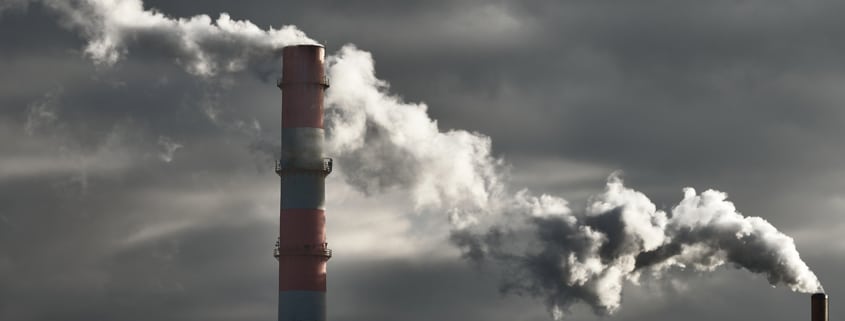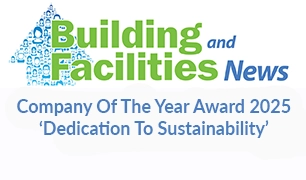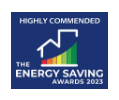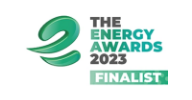This week the UN released its IPCC Sixth Assessment Report (AR6) summarising the state of knowledge of climate change, its widespread impacts and risks, and climate change mitigation and adaptation. The findings of this new UN report are unequivocal, “There is a rapidly closing window of opportunity to secure a liveable and sustainable future for all. Climate change is a threat to human well-being and planetary health, and the choices and actions implemented in this decade will have impacts now and for thousands of years.”
The current status of global warming is clearly delineated in the report, human activities, principally through emissions of greenhouse gases, have unequivocally caused global warming, with the global surface temperature reaching 1.1°C above 1850–1900 in 2011–2020. Global greenhouse gas emissions have continued to increase, with unequal historical and ongoing contributions arising from unsustainable energy use, land use and land-use change, lifestyles and patterns of consumption and production across regions, between and within countries, and among individuals.
The cumulative effect of well-mixed greenhouses gases (GHGs), especially CO₂ emissions, contributed to global warming of 1.0°C–2.0°C between 1850 and 2019, with 42% of these emissions occurring subsequent to 1990. The report argues with ‘high confidence’ that this has driven widespread and rapid changes in the atmosphere, ocean, cryosphere and biosphere. Human-caused climate change is already affecting many weather and climate extremes in every region across the globe. This has led to widespread adverse impacts and related losses and damages to nature and people, with vulnerable communities, who have historically contributed the least to climate change, disproportionately affected.

Progress & Challenges
Most observed adaptation responses are fragmented, incremental, sector-specific and unequally distributed across regions. Despite some progress in planning and implementation, adaptation gaps exist and will continue to grow at current rates of implementation. In some ecosystems and regions soft limits to adaptation, especially in small-scale farming and low-lying coastal regions have been reached, whilst some tropical, coastal, polar and mountain ecosystems already exhibit hard limits. Current global financial flows for adaptation are insufficient for, and constrain the implementation of adaptation options, especially in developing countries.
UN chief Antonio Guterres says this report on climate change is a “survival guide for humanity”. Despite the consistent expansion of policies and laws addressing mitigation, global GHG emissions in 2030, implied by nationally determined contributions (NDCs) announced by October 2021, make it likely that warming will exceed 1.5°C during the 21st century and make it harder to limit warming below 2°C. At least 18 countries have sustained absolute production-based GHG and consumption-based CO2 reductions for longer than 10 years, but these reductions have only partly offset global emissions growth. This means there are gaps between projected emissions from implemented policies and those from NDCs, exacerbated by finance which falls short of the levels needed to meet climate goals across all sectors and regions.
Future of Climate Change
The UN report is clear on the future of climate change, continued greenhouse gas emissions will lead to increasing global warming with the best estimate of reaching 1.5°C in the near term in considered scenarios and modelled pathways.
Risks and projected adverse impacts and related losses and damages from climate change will escalate with every increment of global warming. With further warming, climate change risks will become increasingly complex and more difficult to manage. Multiple climatic and non-climatic risk drivers will interact, resulting in compounding overall risks that cascade across sectors and regions. As a result, the UN assessed that high risks now occur at lower global warming levels.

Some future changes are unavoidable and/or irreversible but can be limited by deep, rapid and sustained global greenhouse gas emissions reduction. This would lead to a discernible slowdown in global warming within around two decades, and also to discernible changes in atmospheric composition within a few years. The likelihood of abrupt and/or irreversible changes increases with higher global warming levels. Similarly, the probability of low-likelihood outcomes associated with potentially very large adverse impacts increases with higher global warming levels.
Clean energy and sustainable hot water technology, as promoted by Adveco, can be exploited to help avoid the growing climate disaster as a part of wider decarbonisation strategies. But organisations need to be acting now. The UN report is clear that the options that are feasible and effective today will become constrained and less effective with increasing global warming. With increasing global warming, losses and damages will increase and additional human and natural systems will reach adaptation limits.
To avoid this on a global scale requires “flexible, multi-sectoral, inclusive, long-term planning and implementation of adaptation actions.” Limiting human-caused global warming requires net zero CO2 emissions. Cumulative carbon emissions until the time of reaching net-zero CO2 emissions and the level of greenhouse gas emission reductions this decade largely determine whether warming can be limited to 1.5°C or 2°C. Projected CO2 emissions from existing fossil fuel infrastructure without additional abatement would exceed the remaining carbon budget for 1.5°C (50%). All global modelled pathways that limit warming to 1.5°C (>50%) with no or limited overshoot, and those that limit warming to 2°C (>67%), involve rapid and deep and, in most cases, immediate greenhouse gas emissions reductions in all sectors this decade. Global net zero CO2 emissions are reached for these pathway categories, in the early 2050s and around the early 2070s, respectively.
If emissions are not curtailed, there is a very real threat of overshooting the target global temperature, this overshoot would entail adverse impacts, some irreversible. The higher the magnitude and the longer the duration of an overshoot, the more ecosystems and societies are exposed to greater and more widespread changes in climatic impact-drivers, increasing risks for many natural and human systems.

This is why it is so important that organisations are supported to a greater extent through government policy and financial support to accelerate decarbonisation strategies and employ changes across the built estate if, as a nation, the UK is to achieve net zero by 205. The impacts of overshooting this deadline are clear.
















